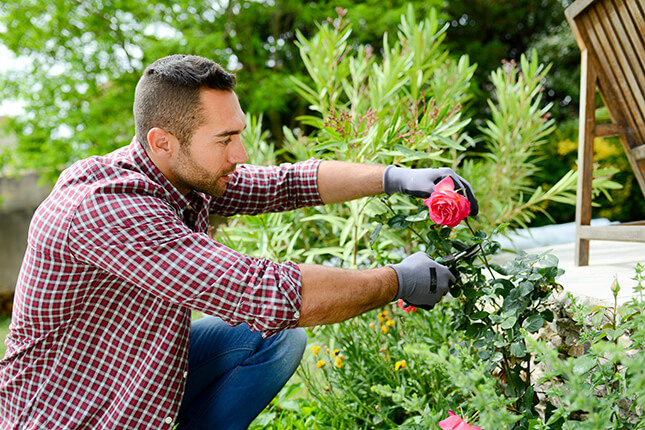Whether you’re looking to do some DIY landscaping, dig out a pool for the backyard, or you’re a professional working to a client’s specifications, it is critical that you are mindful of health & safety best practices at all times when doing landscaping work. Working outdoors introduces a huge variety of powerful tools, sharp instruments, and dangerous machines, that can cause extreme damage if they’re allowed to.
The best way to approach landscaping is to take it very seriously from the outset, and make sure you’re addressing all of the basic safety best practices at all times; whether you’re working by yourself, or you’re part of a team.
1. Dress appropriately
Always wear high-visibility clothing; if you don’t own any, then purchase a high-vis vest to go over the top of your clothing. This will help people to spot you when they’re operating machinery, and prevent potential accidents from not seeing you until it’s too late.
In addition, always wear long pants, long-sleeved shirts, gloves, ear and eye protection, and good, sturdy work shoes when on the job. This is important to protect the body from scrapes and fast-flying debris. The clothes should also not be too loose, to prevent the risk of the material getting trapped in the machinery. Finally, remove all jewelry when on the job.
2. Keep your equipment well-maintained
Power tools, such as tillers, mowers, trenchers, and excavators, can cause very severe injuries if they malfunction or are used incorrectly. Make sure you know know the maintenance processes for these tools, and keep the equipment in good condition.
It’s important to keep smaller tools sharp and well-conditioned, too. Tools that have sharp blades cut more easily and cleaner, and not only does this help prevent mistakes for putting too much force into the tool in order to get the work done, but it also reduces the risk of repetitive-strain injuries.
If you have rented your equipment from a professional supplier such as Solution Plant Hire, it’s important that you speak with them when hiring the equipment about the maintenance needs and safety recommendations for each piece of equipment.
3. If you need to make repairs, make sure you’re doing it safely
If a tool stops working, then make sure it’s completely powered down and disconnected from its power source before you try and diagnose what’s going wrong, or repair it. It’s also a good idea to give it a couple of minutes to lose remaining electrical charge once it’s been completely switched off and disconnected. The last thing that you want is for a spinning blade to cut in when you’re looking at it.
4. Make sure all vehicle tyres are in good condition
Tyres are critical in ensuring the safe operation of any vehicle that you might be using in landscaping. There are a couple of important things to consider here:
- Selection (make sure you’re using tyres according to the manufacturer’s directions)
- Pressure (make sure the tyres are kept at the right condition and maintain the optimal pressure)
- Records (keep good records on the condition and air pressure of the tyres to help diagnose issues if anything arises).
When purchasing or hiring equipment, be sure to discuss with the representative the tyres of the machine; where to buy the best quality tyres from and how to properly replace them.
5. Make sure the operator of heavy machinery is fully trained
It’s highly advised that, even for DIY projects, you get a properly trained operator to manage the equipment. Many of the most common accidents from work sites come from errors made by the operator of the heavy machinery.
6. Properly restrict access to a site that you’re working on
Even if you’re the only one working on a site, it’s a good idea to set up a perimeter, and make sure that only people working on the site have access to it. A common cause of accidents is a person (for example, family member) entering a work site, when an individual was working on it by themselves. A rope boundary will make sure all people are aware of the precise area being worked on.
7. Make sure someone’s in charge
It’s important that you have someone designated as being the project manager, regardless of whether it’s a DIY job, or you’ve got a professional team working with you. This project manager should have expert knowledge on OH&S best practices, and understand what to look for in assessing the condition of the equipment being used.
Small steps to make sure everyone is safe while landscaping
Most of these tips are common sense, but it’s the common sense best practices that are often the ones that are overlooked; especially by people who are undertaking projects as DIY jobs, and are not fully aware of the reasoning behind OH&S regulations. At the same time, the use of specialised equipment by people who are not properly trained in it is a substantial risk, and while it can add to the cost of the overall project, it is always a good idea to invest in hiring a relevant expert to manage the operation of any equipment that you’re unfamiliar with.
Ultimately the injuries that can be caused by landscaping worksites can be very serious, and safety should be the priority at all times.




